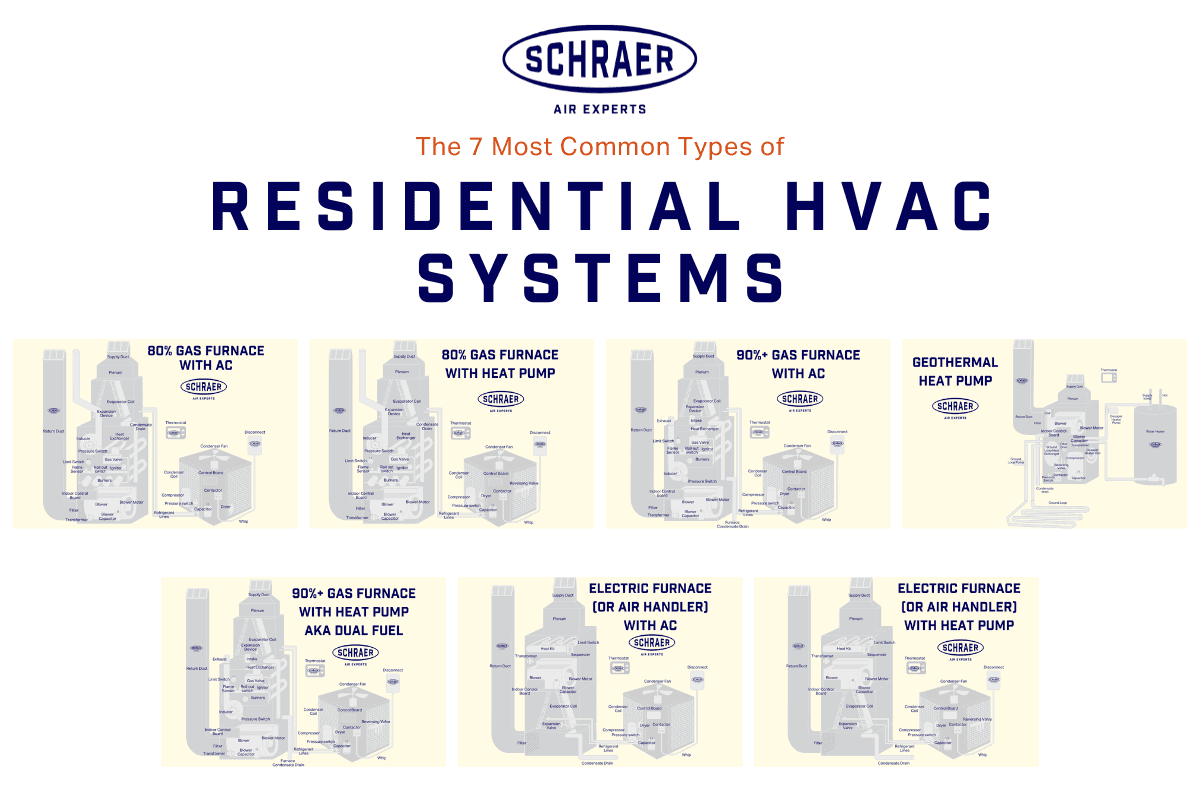The 7 Most Common Types of Residential HVAC Systems
Sep 26, 2024
Author
Jake Nielson
President
At Schraer, we love everything heating, ventilation, air conditioning, and refrigeration. We think about it all day and sometimes all night. When you've thought about something that much throughout your life/career you start to learn enough to be able to simplify it down to something easy for others to understand.
My goal at Schraer is to be the most transparent HVAC company in the country. No smoke and mirrors. No tricks. Just good old fashioned transparent communication so our customers are informed about their system and empowered with knowledge to properly care for them.
Why have this stance? We believe transparency leads to deeply held trust which leads to long-term fruitful relationships. As part of that goal, I want to share not just a simple list of the most common types of residential HVAC systems (which frankly anybody could create a blog post like that in seconds with a quick prompt into ChatGPT - I'm looking at you other HVAC businesses! :)). In this post I'll also show a diagram with each major part that goes into each system type.
Just another way to help our customers be a little more informed about their HVAC system!
Below is the list you came for. Each system type has its own unique features and parts, tailored to different applications and efficiency goals.
1. 80% Gas Furnace with AC
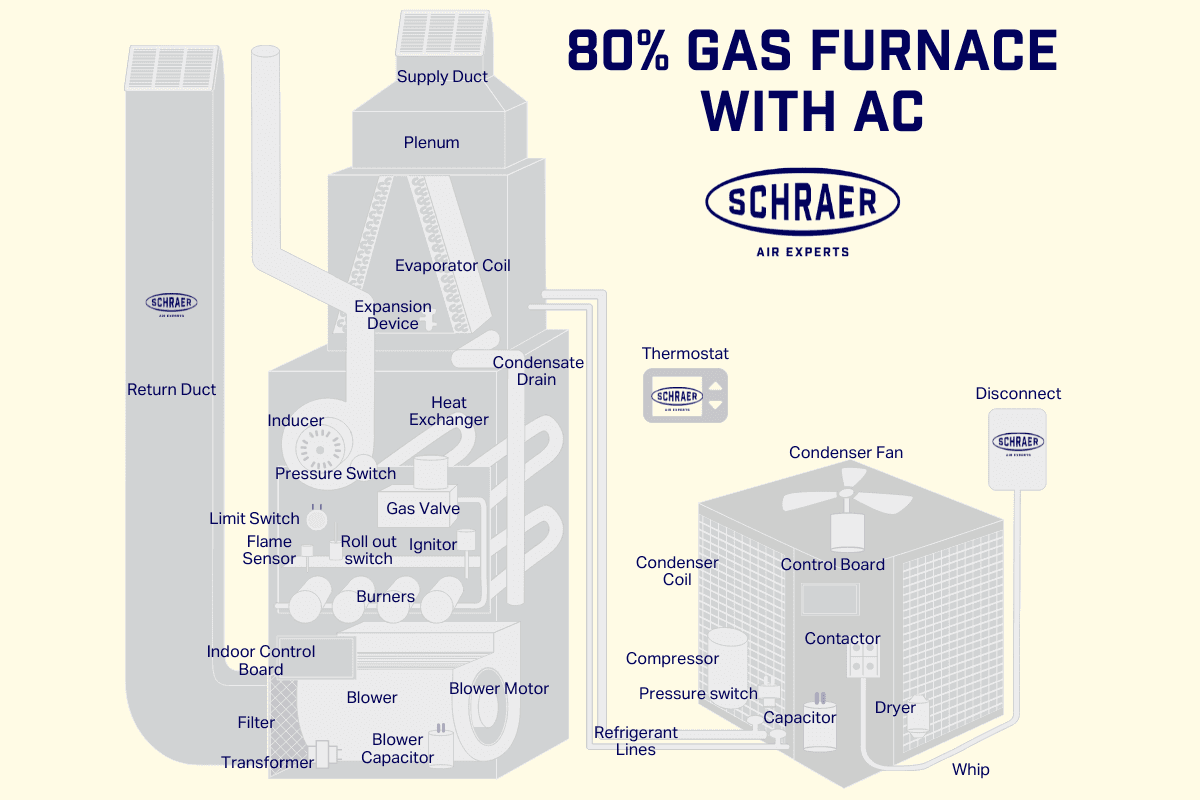
This is the most common system type here in the St Louis metro area. This system pairs an 80% efficient gas furnace with an air conditioner. The furnace, usually either natural gas or propane, heats your home during colder months, while the air conditioning unit cools the home in the summer. It’s a popular and cost-effective option for year-round comfort, ideal for climates (like ours) that experience both hot summers and cold winters.
2. 80% Gas Furnace with Heat Pump
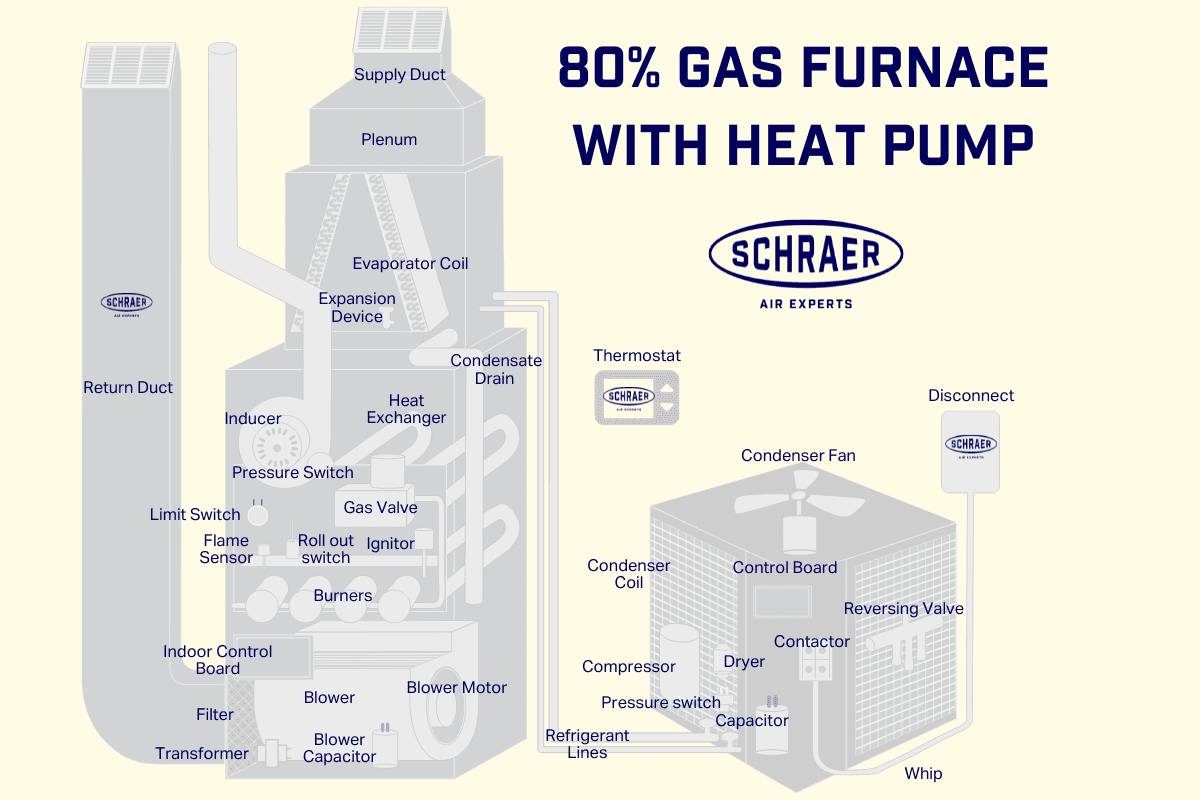
Stepping up from there we have the combination of an 80% efficient gas furnace with a heat pump. You can think of this like a hybrid car. When it's more efficient to use the electricity, the system will run the heat pump, when it's more efficient or the system needs a boost of really hot air on cold winter nights, the system will run the furnace. This is a very energy-efficient system that only uses the gas furnace when necessary, reducing overall energy consumption.
3. 90%+ Gas Furnace with Heat Pump (Dual Fuel)
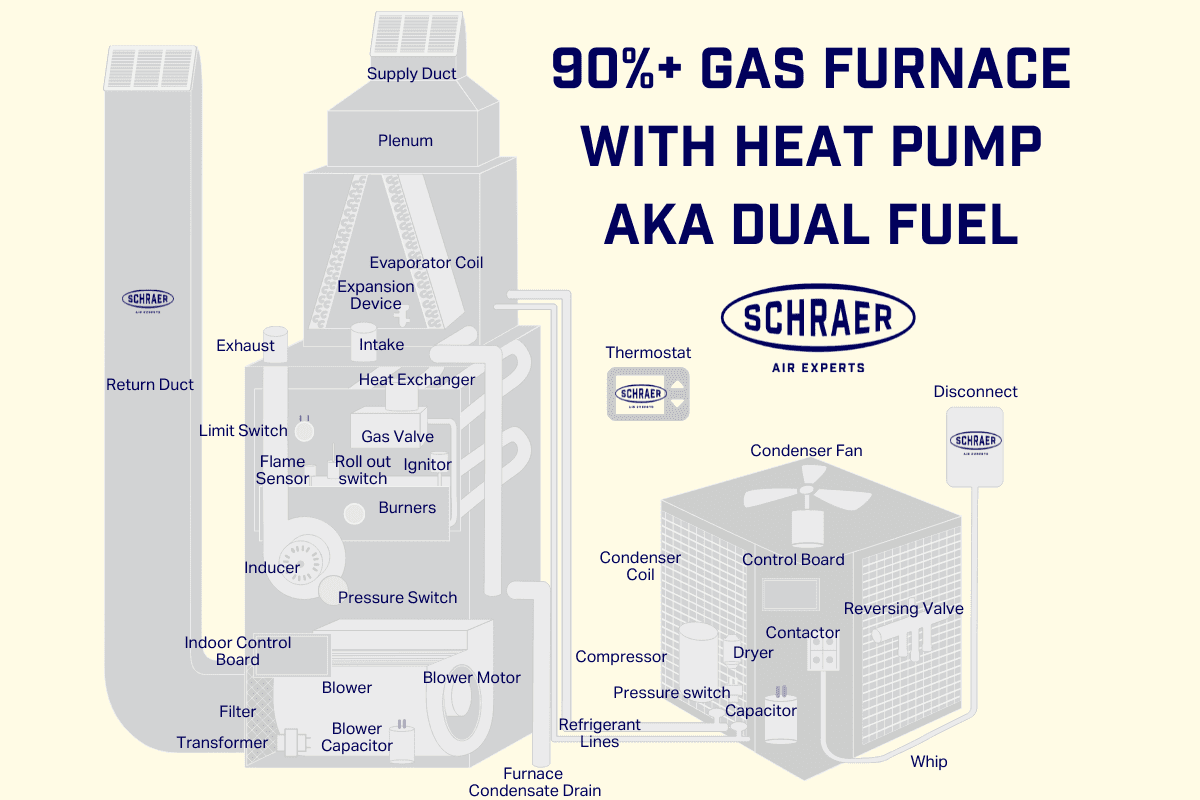
My personal favorite, this system combines a highly efficient 90%+ gas furnace with a heat pump. The furnace provides powerful heating during extreme cold, while the heat pump operates in milder weather and handles cooling during summer. The high-efficiency gas furnace ensures minimal energy waste, making this system a smart choice for colder climates with variable temperatures.
This would be analogous to having the best hybrid car money can buy.
4. 90%+ Gas Furnace with AC
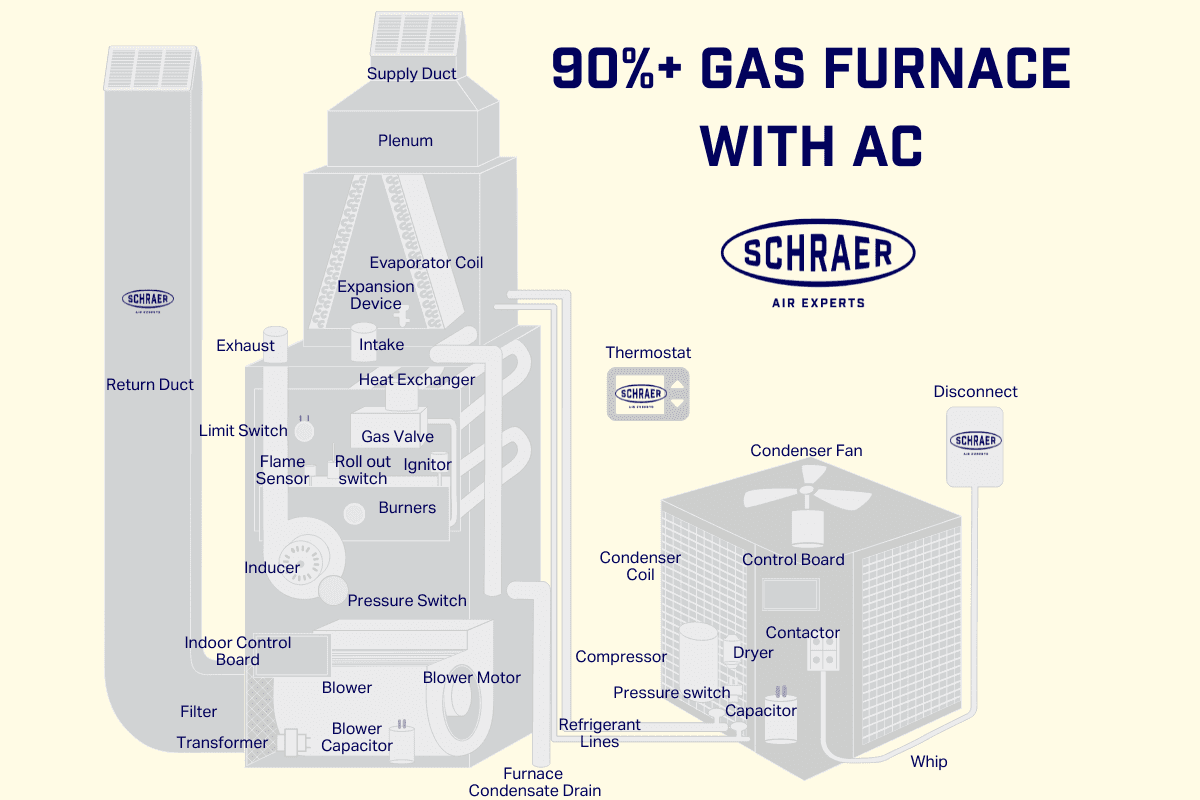
Similar to the 80% gas furnace with AC, this system features a more efficient furnace, operating at 90% or more efficiency. The gas furnace provides highly efficient heating during the colder months, while the AC unit keeps the home cool during summer. This system is ideal for those looking to save on energy costs and improve fuel efficiency year-round.
5. Electric Furnace (or Air Handler) with AC
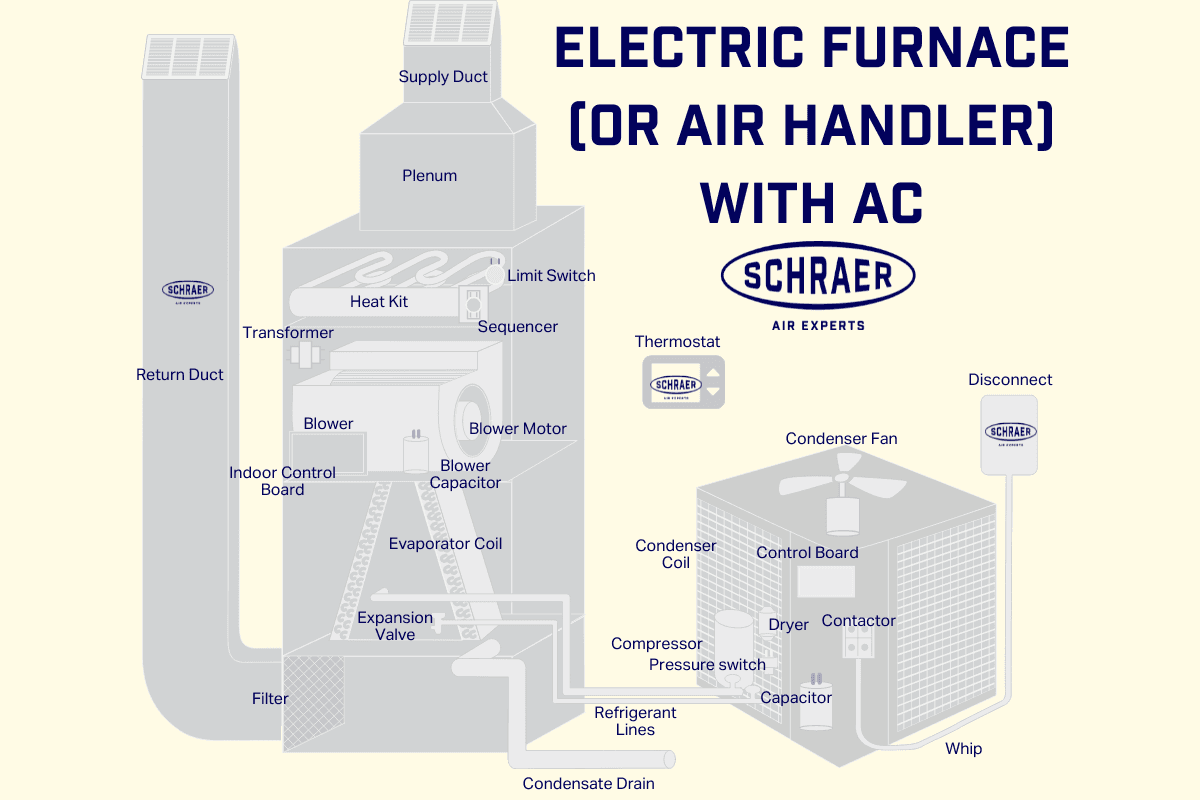
When you only have electric service coming to the home, this is a system that would meet both your heating and cooling needs. This system combines an electric furnace or air handler with an air conditioning unit. Electric furnaces use heating elements powered by electricity and is kind of like having a toaster with a fan blowing across it. This system is simple to maintain and provides effective heating and cooling, making it a reliable option for regions with moderate temperature changes.
While this system will work, we don't recommend it because a heat pump with an electric air handler is far more efficient.
Speaking of which…
6. Electric Furnace (or Air Handler) with Heat Pump
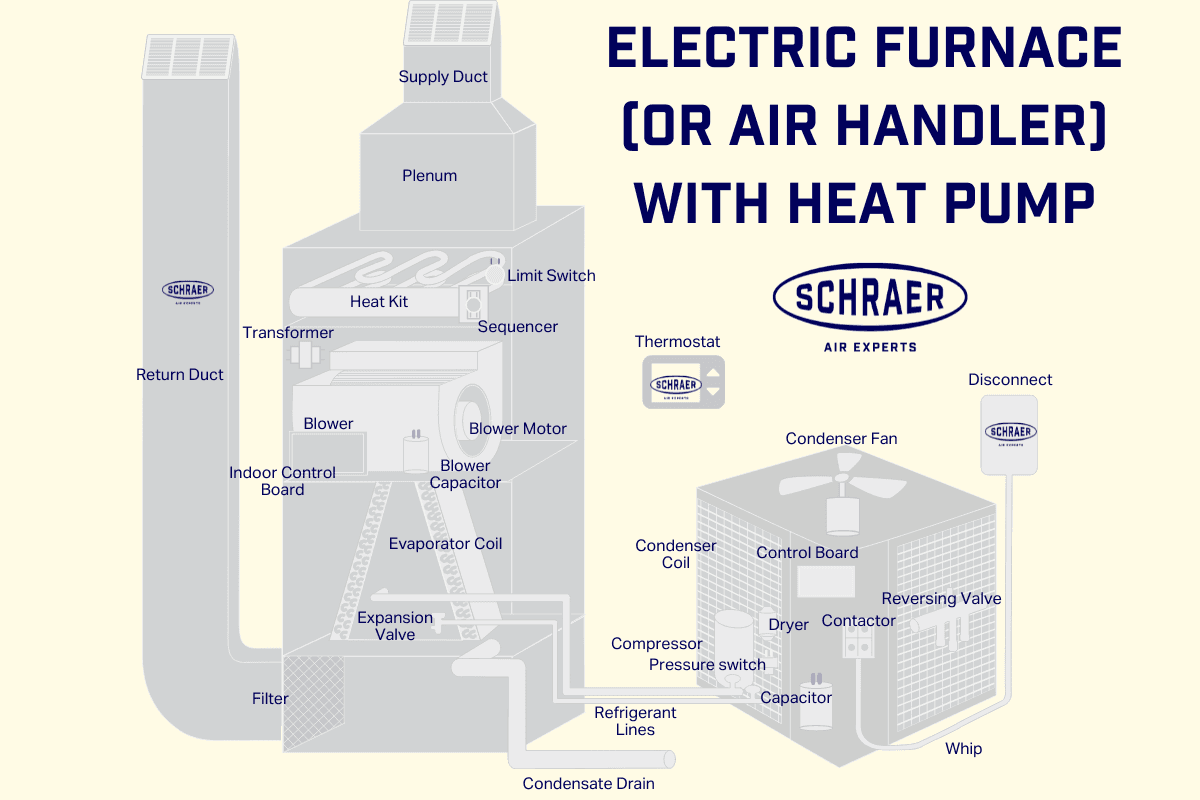
When you only have electric service to your home and you want to save energy, this system gives you the best of both worlds by combining an electric furnace or air handler paired with a heat pump. The heat pump handles most of the heating and cooling, while the electric furnace provides supplemental heating during colder periods. It’s a highly energy-efficient system suited for areas with moderate winter temperatures.
7. Geothermal Heat Pump
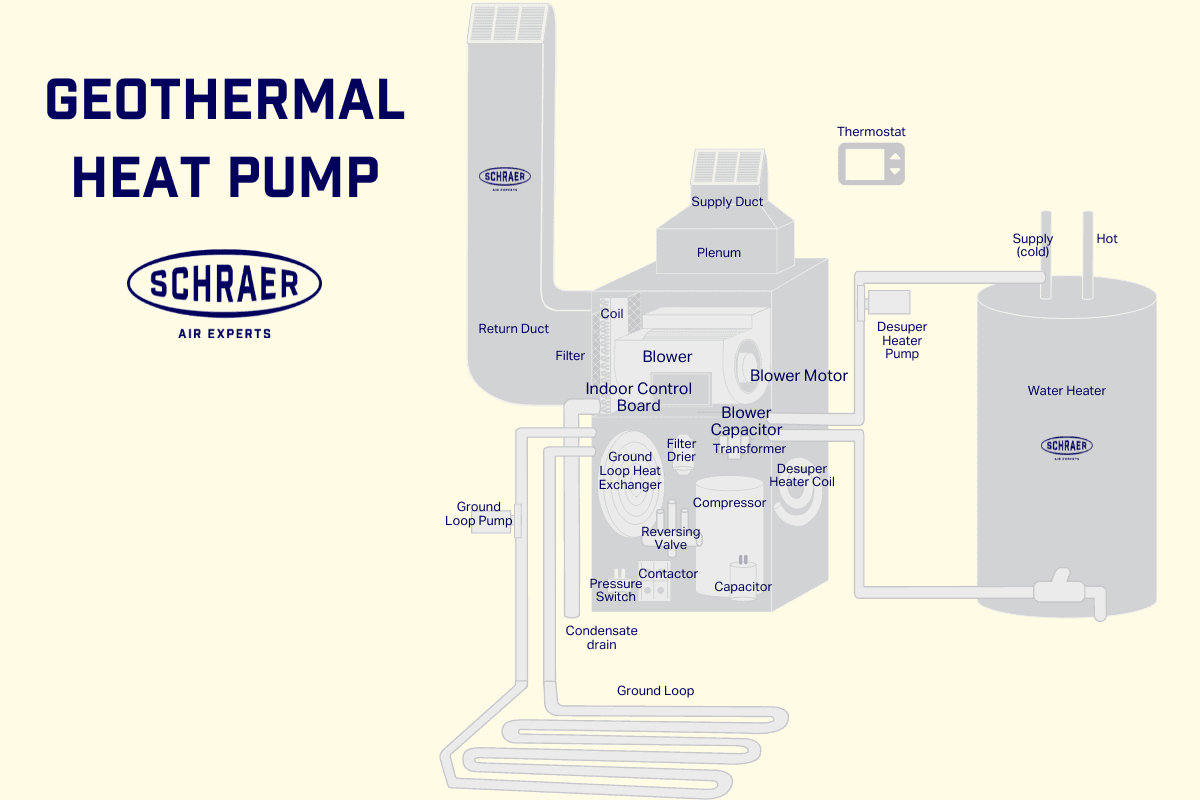
When you are ready to splurge and want the most efficient and comfortable heating and cooling system money can buy, you can't go wrong with geothermal. Geothermal systems use the consistent temperature of the earth to provide heating and cooling. A ground loop (dug into your yard somewhere) circulates water or refrigerant through pipes buried underground, transferring heat to and from the earth. These systems are highly efficient, environmentally friendly, and offer long-term energy savings. Though initial installation costs can be higher, geothermal heat pumps are ideal for those looking for a green, sustainable HVAC solution.
Conclusion
This overview provides a glimpse into the seven most common HVAC systems, each designed for specific applications, energy efficiency preferences, and financial goals. In future blog posts, I will take a deeper dive into each system, breaking down every part listed, from condensers to heat exchangers, to show how they work together to keep your space comfortable year-round. Stay tuned!


